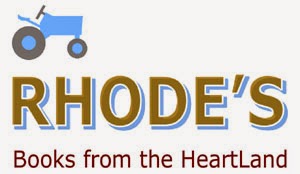When my
mother felt I was old enough, she let me walk to Vacation Bible School, which
was held at the end of May and the beginning of June. I can still recall a
sunny, carefree morning with a hint of the increasingly hot daytime
temperatures to come in a few hours. I set out from our house on the east side
of Pine Village. First, I crossed the curved parking area in front of our fence
and paused at the edge of State Route 26. After looking both ways several
times, I crossed the road. With the most menacing part of the trip behind me, I
cheerfully sought the sidewalk that ran beside the school playground.
 |
|
Methodist
Episcopal Church, 1903
Pine
Village, Indiana
Photograph
Possibly by Magnolia “Nolia” Cobb (1863–1922)
|
I sauntered
along Jim Eberle’s front yard. I could hear his horses nickering in the stable
behind his house. I strolled down the hill. To a person from hilly country, the
“hill” might not be recognizable as a hill, but, in flat land such as the
fields that stretched northward from Warren County into Benton County, the
slight downward grade toward town was considered a hill. At the intersection on
the edge of the downtown, I glanced over at Terrell’s Market, a grocery store
with a gasoline pump and the owner’s five-room house practically adjoining. A
customer might be carrying meat, which was wrapped in paper and which would be
cooked for the noon meal. My family followed the farmers’ practice of calling
the midday meal “dinner.” (The evening meal was “supper.”) Years later, my high
school class painted the interior of Terrell’s Market as a community service
project before such projects were called by that term. My classmates and I just
thought we could be helpful.
 |
| Pine Village Methodist Church Bulletin from the 1950s |
I turned at
the corner and progressed in front of a row of houses that included the home of
Mr. and Mrs. Lowell Morris. Lowell had served as the minister of the Methodist
Church before I was born, had moved away to minister to other congregations
elsewhere, but had recently returned to Pine Village in retirement. He was a surrogate
father to my mother. He and his second wife, Fern, spent many a Sunday having
dinner at our house. His first wife, Ella, had passed away long before. My
father always said that the Reverend Morris gave intelligent sermons. My father’s
assessment meant that “Grandpa Morris,” as I referred to him, appealed to the
intellect. When I was in high school, I had the pleasure of hearing Grandpa
give a guest sermon at the church. I was amazed. He quoted great literature
while carefully constructing an argument of biblical interpretation worthy of
an English Department degree in a leading university. Only later did I hear
another minister reach the same level of sophistication; he was an elderly
gentleman who served the congregation of the First
Christian Church in
Bloomington, Indiana, but I have forgotten his name.
By the time
I reached Church Street and Jefferson Streets, I was ready to mount the steps
to the front door. With the sunshine pouring onto the doorway, I felt hot, but,
after entering the vestibule, I felt delightfully cool. The interior of the
church preserved the nighttime temperature well into the morning.
You will
notice from my description that, except for crossing the state highway, no
threats were posed. The dreamy safety of those years, now so long ago, is one
of the hallmarks of that time.


